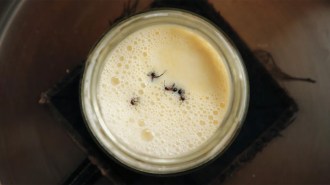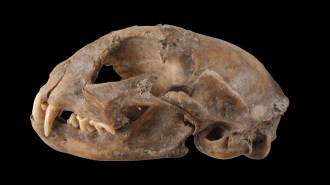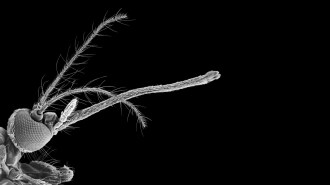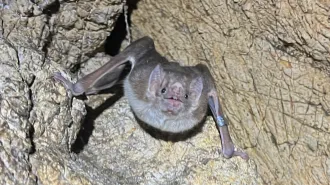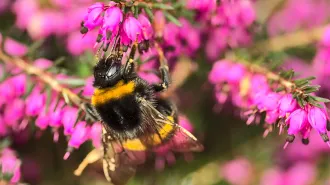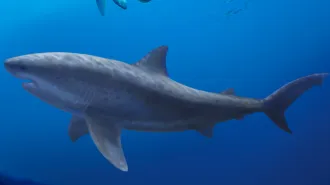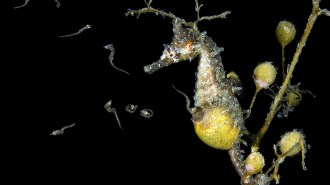Deep Antarctic waters hold geometric communities of fish nests
The structures may help protect eggs from hungry predators
Yellowfin notothenioid arrange their nests in a organized shapes to protect themselves against predators.
Eclipse/Weddell Sea Expedition 2019/Flotilla Foundation
Antarctic fish have built a sprawling neighborhood of neatly arranged nests in the Weddell Sea — a surprising display of organization in some of the coldest waters on Earth. The discovery suggests that these fish strategically group their nests to better protect their eggs from predators, adding to evidence that the Weddell Sea harbors complex, vulnerable ecosystems worth preserving, researchers report October 29 in Frontiers.
“A lot of Antarctic ecosystems are under pressure from different countries to be released for mining, fishing and basically exploitation of the environment,” says Thomas Desvignes, a fish biologist at the University of Alabama at Birmingham who was not involved in the study. “It’s one more reason why we should protect the Weddell Sea.”
While exploring a recently exposed swatch of open water near the Larsen Ice Shelf in 2019, colleagues of marine biologist Russ Connelly dropped an underwater robot into the ocean. The machine hovered along the bottom more than 350 meters deep and filmed the seafloor below.
After the expedition, Connelly combed through the footage to see if the robot captured anything interesting. He saw bowl-shaped dimples pressed into the soft sediment. As he looked closer, Connelly noticed they formed perfect ovals and curves.
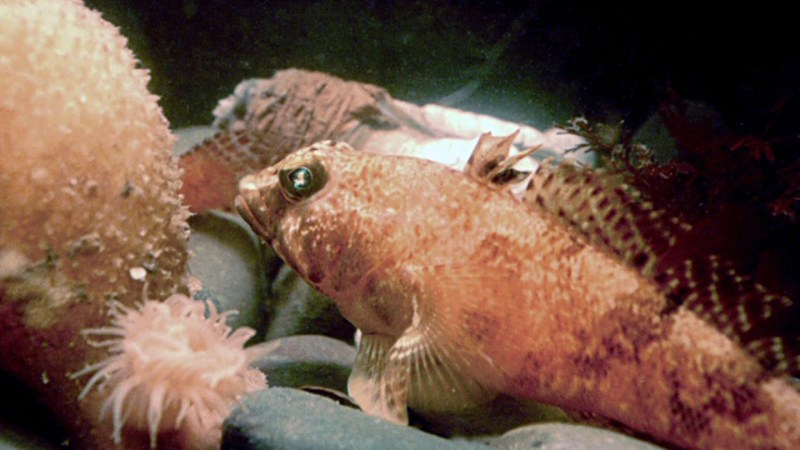
“We weren’t actually sure what the videos were showing us at the time,” says Connelly, of the University of Essex in Colchester, England. “We thought maybe it was a Weddell seal snout that was going down and bonking down into the seabed, or that it was pockmarks from stones dropping from the ice and making craters.”
But the marks were too uniform. Based on the creatures living nearby and the researchers’ knowledge of other Antarctic fish, the team deduced that the odd divots were nests of yellowfin notothenioid fish. The footage revealed more than 1,000 of these nests arranged in five repeating patterns: clusters, crescents, U-shapes, lines and ovals. Some nests also stood alone.
Yellowfin rockcod (Lindbergichthys nudifrons) are not icefish, a subset of Antarctic fish with peculiar adaptations to cold water such as pumping antifreeze compounds in their colorless blood. But they are just as well adjusted to below-freezing temperatures.
Most nests were grouped in the cluster shape, consisting of several nests bunched closely together. Connelly suspects that smaller fish may prefer such group arrangements for better protection against predators, while larger fish capable of fending for themselves might occupy the bigger, singular nests.
But this footage offers only a snapshot. Other factors may explain the nests’ odd ordering, Connelly says. For example, instead of many couples grouping together for protection, a single mating pair could have also made the clustered nests as decoys. More trips to the region are needed to confirm how many fish are using the nests, Connelly says.
“In general, we need to explore more of the oceans, because these things keep cropping up again and again, and we’re so surprised at every single time that we see life exists at these depths,” Connelly says. “We need to see what’s out there before species that we didn’t even know existed have been lost.”
